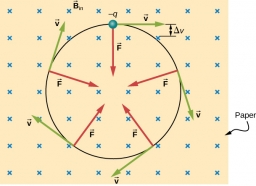Brakes of a car
For the brakes of a passenger car to be effective, it is prescribed that a car be moving on a horizontal road at a speed of 40 km. A car must stop on the track 15.4 m. What is the deceleration of the car?
Final Answer:

Tips for related online calculators
Do you want to convert velocity (speed) units?
You need to know the following knowledge to solve this word math problem:
Units of physical quantitiesthemes, topicsGrade of the word problem
Related math problems and questions:
- Brakes
 The braking efficiency of a passenger car is required to stop at 12.5 m at an initial speed of 40 km/h. What is the acceleration braking by brakes?
The braking efficiency of a passenger car is required to stop at 12.5 m at an initial speed of 40 km/h. What is the acceleration braking by brakes? - Braking distance
 The car travels at an average speed of 12 km/h and detects an obstacle 10 m in front of it. At 1 m in front of the obstacle, it already runs 2 km/h. What is the braking distance? What is the required deceleration for a stop: A) 1m B) 1s?
The car travels at an average speed of 12 km/h and detects an obstacle 10 m in front of it. At 1 m in front of the obstacle, it already runs 2 km/h. What is the braking distance? What is the required deceleration for a stop: A) 1m B) 1s? - Friction coefficient
 What is the weight of a car when it moves on a horizontal road at a speed of v = 50 km/h at engine power P = 7 kW? The friction coefficient is 0.07
What is the weight of a car when it moves on a horizontal road at a speed of v = 50 km/h at engine power P = 7 kW? The friction coefficient is 0.07 - Accompanying 5748
 An accompanying vehicle set off behind the car with an oversized load moving at a speed of 16 km/h in 2.5 hours, which must reach it in 45 minutes. What speed does he have to go?
An accompanying vehicle set off behind the car with an oversized load moving at a speed of 16 km/h in 2.5 hours, which must reach it in 45 minutes. What speed does he have to go? - Overtaking
 On the direct road, the passenger car overtakes the slower bus by starting to overtake 20 meters from the bus and then passing it ahead of it again 20 meters away. The car overtakes at a steady speed of 72 km/h, while the bus goes at a steady speed of 54
On the direct road, the passenger car overtakes the slower bus by starting to overtake 20 meters from the bus and then passing it ahead of it again 20 meters away. The car overtakes at a steady speed of 72 km/h, while the bus goes at a steady speed of 54 - Car deceleration
 The car is traveling at a speed of 54 km/hour. The driver starts braking with an acceleration (deceleration) of 3 m/s². Specify the time in which to stop.
The car is traveling at a speed of 54 km/hour. The driver starts braking with an acceleration (deceleration) of 3 m/s². Specify the time in which to stop. - Car crash
 A car crash occurred on the road with a maximum permitted speed of 60 km/h. From the length of the vehicle's braking distance, which was 40 m, the police investigated whether the driver did not exceed that speed. What is the conclusion of the police, assu
A car crash occurred on the road with a maximum permitted speed of 60 km/h. From the length of the vehicle's braking distance, which was 40 m, the police investigated whether the driver did not exceed that speed. What is the conclusion of the police, assu
